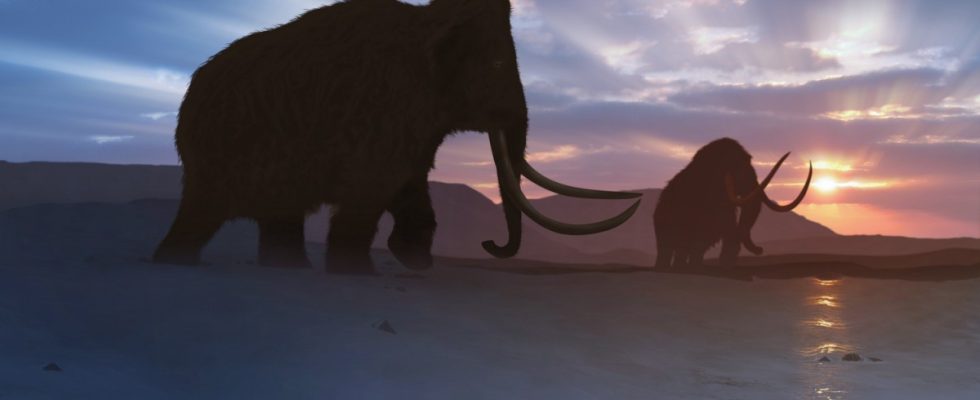When Elma was struck by a deadly spear, she was in the prime of her life. She was probably around 20 years old, a proud, well-fed woolly mammoth who had traveled a lot. In the end, it provided prehistoric hunters with provisions for the coming days – and modern paleoanthropologists with exciting data, because their tusks have survived the 14,000 years since in good condition. They testify to a primeval closeness between humans and animals, as a team of scientists led by Audrey Rowe and Matthew Wooller from the University of Alaska Fairbanks and Clement Bataille from the University of Ottawa in the specialist journal Science Advances to report.
Whether the animal was actually called Elma, short for Élmayųujey’eh, it remains to be seen. That’s what members of the Healy Lake Village Council named it, the site where the mammoth skeleton was found, 200 kilometers southeast of Fairbanks. However, the results that Rowe’s team has now presented are based on science. Accordingly, Elma wandered around 1,000 kilometers back and forth between Alaska and northwest Canada in her short life, and she was apparently always pursued by Stone Age hunters and gatherers.
Apparently the mammoths migrated along the same paths for thousands of years
The fact that people were present at that time can be seen from the remains of campfires, stone tools and worked animal bones. The researchers, however, were able to track the paths of Elma and other mammoths using so-called isotope analysis. These types of atoms serve as chemical markers that can be used to determine the diet and location of animals and people, even thousands of years apart.
Since the specific isotopes accumulate in different parts of the horn over the years depending on the growth of a mammoth tusk, it is even possible to roughly estimate when the animals were where. And apparently people followed the paths of the mammoths. “It appears that people set up their hunting camps where mammoths were common,” Rowe said in a statement from the University of Alaska.
Further analysis of other mammoths showed that Elma migrated along the same routes as a male specimen that had lived in the region 3,000 years earlier. Apparently the routes of the mammoths lasted for thousands of years – until at some point in Elma’s time humans appeared and at the same time more trees grew. “Climate change at the end of the Ice Age shrank the open spaces mammoths preferred,” says co-author Ben Potter, an archaeologist at the University of Alaska Fairbanks. In the protection of the growing forests, human hunters were then able to stalk the animals more easily and hunt successfully. It is also likely that Elma succumbed to a Stone Age weapon, especially since she was found in a hunting camp. Although – as is often the case in paleontology – one cannot say this with absolute certainty.

